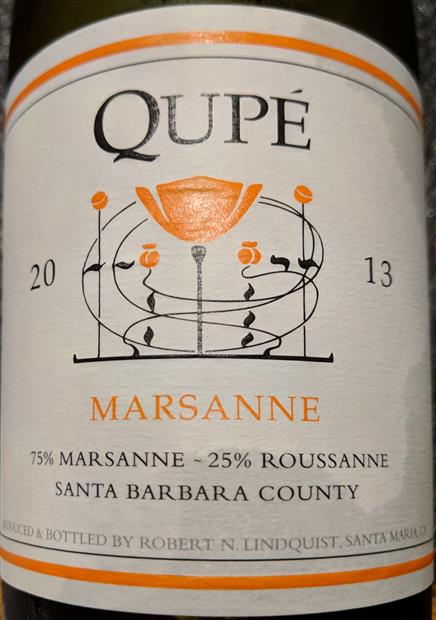
External search
Google (images)
Wine Advocate
Wine Spectator
Burghound
Wine-Searcher
Vintages
2019
2018
2017
2016
2015
2014
2013
2012
2011
2010
2009
2008
2007
2006
2005
2004
2003
2002
2001
2000
Show more
From this producer
Show all wines
All tasting notes
|
| Drinking Windows and Values |
| Drinking window: Drink between 2016 and 2021 (based on 32 user opinions) |
| Community Tasting History |
| Community Tasting Notes (average 87.6 pts. and median of 88 pts. in 12 notes) - hiding notes with no text | | | Tasted by Charles Ferrin on 1/17/2023 & rated 89 points: This vintage is hanging in there but seems to be fading. It's drinkable but doesn't have enough of that nectar/honey character I was looking for. Drink now while there's still time. (285 views) | | | Tasted by Tim336 on 3/12/2021 & rated 88 points: a fairly dense, creamy white, holding up well at 8 years of age. Any acidity and precision has largely gone, but there's still a fair bit of nuance and pleasure to be had here, particularly with a salmon in tarragon cream. It's lasted this long so it could be interesting to see what develops with some really long-term aging, but at this point I'm not sure what we'd be waiting for. (812 views) | | | Tasted by billyabbott on 12/2/2019: Gentle nose – creamy with citrus touches. Weightier palate, with pear, apricot and some butter touches. Green edges with balanced sweetness. (969 views) | | | Tasted by andrewstevenson.com on 9/22/2018 & rated 91 points: Quite a subtle nose: creamy, lemon. Fresh.
Good palate: creamy and fresh, like the nose, with some minty/menthol notes too. There's actually quite a resiny feel and texture on the palate (though it's nothing like retsina!)
A very interesting and very versatile wine with food. (1273 views) | | | Tasted by Blake Brown on 1/27/2017 & rated 89 points: 2013 QUPE SANTA BARBARA COUNTY MARSANNE- 25% Roussanne blended in; this shined with aromatics of flint, minerals and mild doses of citrus and then in the taste along with a bit of saline and more specifically lemon lime fruit; it was medium bodied and had a nice palate cleansing effect. (1542 views) | | | Tasted by rjonwine@gmail.com on 6/11/2016 & rated 89 points: Light yellow color; tart apple, lemon peel nose; poised, tart lemon, mango palate with balancing acidity; medium-plus finish (407 views) | | | Tasted by WinePT on 9/19/2015 & rated 87 points: Soft subtle interwoven notes of orange, lemon, pine nut, and wax with a long mouth coating finish. While this wine has good complexity for the price, it wasn't in my wheelhouse. (2166 views) | | | Tasted by isaacjamesbaker on 6/18/2015 & rated 85 points: Rhone Rangers DC (Longview Gallery - Washington, DC): Rich and nutty, orange marmalade, candied lemon, lacking a bit of acid. I like the mouthfeel and some of the flavors, but I’d like more acid. Includes 25% Roussanne. (2299 views) |
| By Josh Raynolds
Vinous, Focus on Santa Barbara County (Dec 2014) (12/1/2014)
(Qupe Marsanne Santa Barbara County Santa Maria Valley) Subscribe to see review text. | By Richard Jennings
RJonWine.com (6/11/2016)
(Qupé Marsanne) Light yellow color; tart apple, lemon peel nose; poised, tart lemon, mango palate with balancing acidity; medium-plus finish 89 points |
NOTE: Scores and reviews are the property of Vinous and RJonWine.com. (manage subscription channels) |
| Qupé Producer websiteMarsanne Varietal character (Appellation America)USAAmerican wine has been produced since the 1500s, with the first widespread production beginning in New Mexico in 1628. Today, wine production is undertaken in all fifty states, with California producing 84% of all U.S. wine. The continent of North America is home to several native species of grape, including Vitis labrusca, Vitis riparia, Vitis rotundifolia, and Vitis vulpina, but the wine-making industry is based almost entirely on the cultivation of the European Vitis vinifera, which was introduced by European settlers. With more than 1,100,000 acres (4,500 km2) under vine, the United States is the fourth-largest wine producing country in the world, after Italy, Spain, and France.California2021 vintage: "Unlike almost all other areas of the state, the Russian River Valley had higher than normal crops in 2021, which has made for a wine of greater generosity and fruit forwardness than some of its stablemates." - Morgan Twain-Peterson Central Coasthttp://www.ccwinegrowers.org/links.html
http://www.discovercaliforniawines.com/regional-wine-organizations/
http://beveragetradenetwork.com/en/btn-academy/list-of-winegrowers-association-in-central-coast-california-274.htm
Central Coast AVA WikipediaSanta Ynez ValleyThe Santa Ynez Valley AVA is the largest wine sub-region of Santa Barbara County and has the highest concentration of vineyards. The valley runs from east to west, between the Purisima Hills and the San Rafael Mountains in the north, and the Santa Ynez Mountains in the south. Although the valley is open to the Pacific Ocean in the west, the fact that it is relatively narrow means that limited cool air and fog is funnelled in. Low average rainfall and a very long growing season make the region ideal for quality wine production.
The diverse climates of Santa Ynez Valley mean that a wide array of wines is produced. The cool, western part of the AVA is predominantly planted with Pinot Noir and Chardonnay, accompanied by other aromatic white varieties. Botrytis cinerea (noble rot) is able to flourish here, allowing some outstanding dessert wines to be produced in suitable vintages. Further east, the cooling effect of the ocean is lessened as both vineyard elevation and average temperatures increase. This warmer part of Santa Ynez Valley is more suited to fuller-bodied grape varieties, such as Syrah and Merlot.
more ...s expected, Chardonnay and Pinot Noir thrive, while the more inland zones lay claim to Bordeaux varietals and some Rhone blends. |
|




